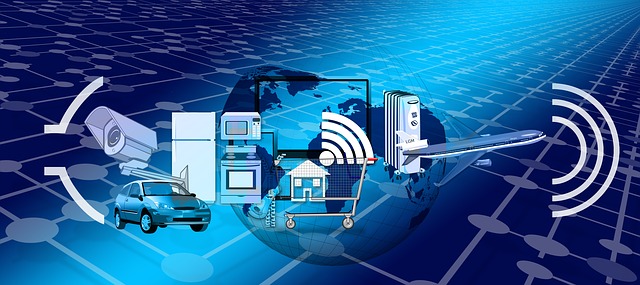
Internet of Things? It’s really the Internet of making those things useful.
We’re reading an awful lot these days about the Internet of Things. Is it here yet? When’s it coming? How big is it? And, come to think of it, what exactly is it? But perhaps the most fundamental question of all is what exactly is the IoT doing to make my life better?
This is a question asked and answered in an article we saw recently in the Wall Street Journal. In “The Internet of Things Is Here, and It Isn’t a Thing,” Christopher Mims, makes the point that the IoT is already here. Only it’s not about having a smart thermostat that you may or may not want to figure out how to set via your iPhone. It’s really about the services that take advantage of connected devices and actually do something with them.
Looking for a good example? Look no further than Uber. Even though it’s built on connectivity and smart technology in the hands of drivers and would-be riders, we really don’t think of it as IoTl. We think of it as a transportation service. Because that’s what Uber provides.
Another example Mims points to is coming from Clorox. No, it’s not a smart bottle of bleach. It’s from Clorox’s Brita unit, which is bringing a smart pitcher to market. What’s smart about is that it knows when you need a replacement filter, and orders it for you.
Mims also uses the example of iControl Networks. The iControl approach is “do it for me” rather than DIY. Mims spoke with Letha McLaren, iControl’s Chief Marketing Officer about their services orientation:
Understanding that most people want to solve problems without worrying about the underlying technology was crucial, she says. “Early on, we found that if you called what we do ‘home automation,’ people liked it but they would not spend money on it,” Ms. McLaren says. “But if you called it ‘peace of mind’ and anchored it on home security, then people knew they need to have that and would spend $35 to $45 a month on it.”
Compare this with Alphabet/Google’s Nest “which sells a smart thermostat and smoke alarm, both of which operate primarily as isolated devices, rather than as components of a larger service.”
Another way of looking at this is that most of us don’t live our lives centered around controlling our thermostats or our water filters. Our lives are oriented around activities: staying warm and having clean water to drink. Yes, there are plenty of technically-oriented consumers, many early adopters, who are deeply interesting in knowing about and playing with underlying technology. But those are the early adopters, not the mass audience.
Mims sees that the shift is on “from describing objects as smart and connected to realizing that they are elements of a service offering allows us to make a prediction: The next breakout Internet-of-Things company will be another services business.” And that breakout business may well be in the home healthcare arena.
We’re with Mims here. We see it every day when we talk to our customers and prospects, companies that are using IoT technology – sensors, smarts, connectivity – to bring offerings to market that solve real problems for real people. While their offerings may be technology based, make no mistake. What they’re offer is a service: helping patients stick to their medication schedule; enabling the elderly to stay in their homes; coordinating home healthcare among multiple providers.
There’s an old marketing dictum that holds that people don’t buy products, they buy solutions. For home healthcare, as with so many other markets where IoT is coming into play, those solutions are services. The end users don’t really care what’s in the box. They just want to know that it works – and what it does for them.

